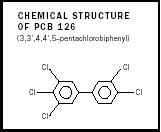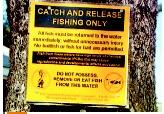PCBs (Polychlorinated Biphenyls)
PCBs, known to cause cancer in animals and believed to cause cancer in humans, are among the most widespread and hazardous synthetic pollutants. They comprise a group of 209 structurally similar compounds, so-called congeners . The individual congeners differ in the degree of chlorination and the positions of the chlorine atoms in the molecule. They are numbered from one to 209 according to a scheme proposed by Ballschmiter and Zell (hence, the term BZ numbers).
PCBs are obtained by the controlled reaction of biphenyl with elemental chlorine under the catalytic influence of iron or iron chloride. The commercial formulations were mixtures of various congeners. They were marketed under trade names such as Aroclor, Pyranol, and Clophen and were characterized by their average chlorine content, ranging from 21 to 68 percent. The pattern of congener composition is characteristic for each product and may serve to identify the source of a local contamination. PCBs are stable to heat, chemical, and biological decomposition. The mixtures are clear to yellow nonflammable thick liquids (i.e., of medium to high viscosity) or waxy solids. With an increasing degree of chlorination the low water solubility and volatility further decrease, while persistence, lipid solubility, and thus the capacity for bioaccumulation increase. Boiling limits are between 270 and 420°C (515 and 788°F) and water solubility ranges from 0.1 μg/L to 6 mg/L. The electrical conductivity is extremely low. Because of their excellent technical properties, PCBs were used extensively as insulating oils in electrical components such as transformers and capacitors. Additionally, they were used in hydraulic fluids, lubricating oils, plasticizers, paints, adhesive resins, inks, fire retardants, and various other products.
The industrial production of PCBs started in 1929. From that point, PCBs were produced in many countries, including the United States, China, France, Germany, Japan, the former Soviet Union, and the United Kingdom. When their bioaccumulation and adverse health effects became recognized, open uses were terminated in the early 1970s. During the late 1970s most countries completely stopped PCB production, for example, the United States outlawed its manufacture in 1977. Until production ceased, an estimated one million metric tons had been manufactured. A large proportion of this amount is still in use in closed applications, although some countries have set deadlines for the replacement of all PCB-containing transformers and capacitors. From production, open uses, leaks from closed systems, and improper disposal, large amounts of PCBs have entered the environment. As Dobson and van Esch note, a large part of these PCBs is believed to be located in aquatic sediments. Despite the termination of production, further emissions into the environment are expected from PCBs still in use, from dump sites, and by remobilization from contaminated soils and sediments.

Once released into the environment, PCBs may continue to exist for years since they are very resistant to chemical and biological degradation. A constant process of deposition and reevaporation favors combined atmospheric and ocean-borne long-range transport to areas far from known PCB sources. In 2002 PCBs are found virtually everywhere on the planet: in deep-sea sediments as well as in arctic and antarctic environments. Their high affinity for organic material causes adsorption on particles and sediments, and accumulation in food webs. For the top members of the food chain, enrichment factors of twenty million and greater have been calculated. PCBs are stored in fatty tissue. They are transferred to offspring via eggs or mother's milk.
Although the acute toxicity of PCBs is rather low, their chronic effects are severe. They include chloracne, hepatocellular carcinoma, adenofibrosis, and damage to the nervous system. During the 1990s evidence was presented by Colborn, Dumanoski, and Myers that PCBs reduce reproductive capacity, and the numbers and viability of sperms and eggs. Maternal exposure to PCBs has been linked to neurological and cognitive problems in young children. Furthermore, there are indications that PCBs suppress normal immune responses. The toxicity of individual congeners varies significantly. The most toxic congeners are coplanar (i.e., flat) PCBs, which show a structural similarity to dioxin. This is taken into account by the system of toxicity equivalency factors (TEF), relating the toxicity of a compound to that of 2,3,7,8-tetrachlorodibenzo[1,4]dioxin. A certain percentage of the toxicity of PCB formulations can be attributed to a compound class closely related to dioxins known as furans, which are contained as impurities.
Although UV and biological processes are known to decompose PCBs to some extent, the most commonly chosen method is thermal deconstruction. Temperatures above 1,200°C (2,192°F) and an excess of oxygen are necessary to ultimately destroy PCBs. Temperatures of 600 to 900°C (1,112 to 1,652°F), as typically found in communal waste incinerators, favor the formation of the more toxic chlorinated furans. The remediation of PCB-contaminated sites usually consists of removing soil by excavation or sediments by dredging, and disposing of the contaminated material in hazardous waste landfills or incinerating them in approved facilities.
In the case of the upper Hudson River in New York State that is heavily contaminated with PCBs from former General Electric production sites, there has been much controversy over the benefits of dredging. Although opponents fear an elevated remobilization of PCBs from dredged sediments, supporters argue that modern dredging equipment minimizes resuspension and that PCBs would be slowly released from sediments over the course of the next several decades if not removed from the river system. Fishing has been banned in some parts of the Hudson River, and in 2002 the U.S. Environmental Protection Agency (EPA) drew up a $500 million plan to dredge its sediments.
Because of their high persistence, the large amounts deposited in the environment, and their bioaccumulative and toxic potential, PCBs will remain among the priority pollutants for decades.
SEE ALSO B IOACCUMULATION ; D REDGING ; P ERSISTENT O RGANIC P OLLUTANTS (POP S) ; P ESTICIDES ; S UPERFUND ; W ATER P OLLUTION .

Bibliography
Colborn, Theo; Dumanoski, Dianne; and Myers, John Peterson. (1996). Our Stolen Future. New York: Dutton.
Dobson, Stuart, and van Esch, G.J. (1993). Polycholorinated Biphenyls and Terphenyls, 2nd edition. Geneva: World Health Organization.
Erickson, Mitchel D. (1997). Analytical Chemistry of PCBs, 2nd edition. Boca Raton, FL: Lewis Publishers.
Hutzinger, Otto; Safe, Stephen; and Zitko, V. (1983). The Chemistry of PCBs. Melbourne, FL: Krieger.
Robertson, Larry W., and Hansen, Larry G., eds. (2001). PCBs: Recent Advances in Environmental Toxicology and Health Effects. Lexington: The University Press of Kentucky.
Safe, Stephen, and Hutzinger, Otto, eds. (1987). Polychlorinated Biphenyls (PCBs): Mammalian and Environmental Toxicology. New York: Springer-Verlag.
Waid, John. (1987). PCBs and the Environment. Boca Raton, FL: CRC Press.
Internet Resource
U.S. Environmental Protection Agency. "The PCB Home Page at EPA." Available from http://www.epa.gov/pcb .
Stefan Weigel
Comment about this article, ask questions, or add new information about this topic: